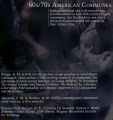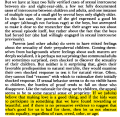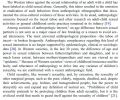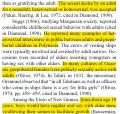One of our staff members is contributing considerably to a News Archiving service at Mu. Any well educated (Masters, PhD or above) users who wish to make comments on news sites, please contact Jim Burton directly rather than using this list, and we can work on maximising view count.
Research: Intergenerational Relationships in History: Difference between revisions
The Admins (talk | contribs) No edit summary |
The Admins (talk | contribs) |
||
| Line 6: | Line 6: | ||
:''[https://greek-love.com/ Greek Love: Pederasty throughout the ages], gives a historical context on Ancient Greece and many other cultures'' | :''[https://greek-love.com/ Greek Love: Pederasty throughout the ages], gives a historical context on Ancient Greece and many other cultures'' | ||
Much has been written about the Ancient Greeks and their age-structured pederastic relationships. So much in fact, that we can cite [http://en.wikipedia.org/wiki/Pederasty_in_ancient_Greece Wikipedia] and [http://web.archive.org/web/20100309132321/http://www.truthtree.com/pederasty.shtml Truthtree] as accurate sources of information in this area. To | Much has been written about the Ancient Greeks and their age-structured pederastic relationships. So much in fact, that we can cite [http://en.wikipedia.org/wiki/Pederasty_in_ancient_Greece Wikipedia] and [http://web.archive.org/web/20100309132321/http://www.truthtree.com/pederasty.shtml Truthtree] as accurate sources of information in this area. To certain parts of Greek society, relationships between men and adolescent boys were not only acceptable, but a desirable form of mentorship and (military) training towards the masculine ideal. As accounts reveal, rules and regulations within this model were particularly strict - arguably more so than in modern societies that condemn pederasty as pathological. | ||
Many Greek men waited until they were about 30 years of age to marry. When they did marry, their partner would often be a girl of 12 or 14.<ref name="bullough">[[Vern Bullough|Bullough, Vern L.]] (2004). "Children and adolescents as sexual beings: a historical overview," ''Child and Adolescent Psychiatric Clinics of North America'', 13(3), 447-459.</ref> | Many Greek men waited until they were about 30 years of age to marry. When they did marry, their partner would often be a girl of 12 or 14.<ref name="bullough">[[Vern Bullough|Bullough, Vern L.]] (2004). "Children and adolescents as sexual beings: a historical overview," ''Child and Adolescent Psychiatric Clinics of North America'', 13(3), 447-459.</ref> | ||
Revision as of 19:25, 15 September 2022
 | ||||||||||||
| Part of NewgonWiki's research project | ||||||||||||
|---|---|---|---|---|---|---|---|---|---|---|---|---|
|
| ||||||||||||
| ||||||||||||
|
| ||||||||||||
| Template: Research - This template |
There have existed a wide range of western and non-western societies that have tolerated or encouraged intergenerational sexuality. More recent examples are generally subcultures which run counter to modern sexual morality.
Ancient Greece
- Greek Love: Pederasty throughout the ages, gives a historical context on Ancient Greece and many other cultures
Much has been written about the Ancient Greeks and their age-structured pederastic relationships. So much in fact, that we can cite Wikipedia and Truthtree as accurate sources of information in this area. To certain parts of Greek society, relationships between men and adolescent boys were not only acceptable, but a desirable form of mentorship and (military) training towards the masculine ideal. As accounts reveal, rules and regulations within this model were particularly strict - arguably more so than in modern societies that condemn pederasty as pathological.
Many Greek men waited until they were about 30 years of age to marry. When they did marry, their partner would often be a girl of 12 or 14.[1]
15th Century Florence
Florence was famed for its widespread homosexual culture, which manifested as a normative pederasty involving boys between the ages of thirteen and eighteen in relationship with adult men.[2] This reputation was so much that in 1432 the city established "Gli Ufficiali di Notte" (The Officers of the Night) to root out the practice of sodomy. From that year until 1502, the number of men charged with sodomy numbered greater than 17,000, of which 3,000 were convicted. However this number also includes heterosexual sodomy. This also gave rise to a number of proverbs illuminating the views of the common people towards the practice. Among them are If you crave joys, tumble some boys. [3] This reputation is also reflected in the fact that the Germans adopted the word Florenzer, when they were talking about a pederast.[4][5] The Neapolitans on the other hand when speaking of pederasty, called it Il vizio inglese, "the English vice".[6]
14th-16th Century Japan
In medieval Japan (14th–16th centuries), it was customary for elite families to entrust their young sons to the care of renowned Buddhist priests from whom they received a premier education in Buddhist scriptures, poetry, music, and dance. When the boys reached adolescence, some underwent coming-of-age rites, others entered the priesthood, and several extended their education, becoming chigo, or Buddhist acolytes. Chigo served their masters as personal attendants and as sexual partners. During religious ceremonies—adorned in colorful robes, their faces made up and hair styled in long ponytails—they entertained local donors and pilgrims with music and dance.[7]
18th Century England
Girls as young as 12 were highly-valued for their attractiveness as prostitutes in England during the 18th century. Young, pubescent boys were also popular. The age-of-consent was not raised from 10 until the 19th century.[1]
Mid 19th Century America
The Huffington Post wrote about Thomas Lowry's "The Story the Soldiers Wouldn't Tell: Sex in the Civil War":
- "Chapter 11 of Lowry's book opens the closet door on gender-bending and same-sex trysts. And Lowry reveals that during the Civil War conventional gender roles and sexual behavior could not be strictly tethered to a heterosexual paradigm. With men outnumbering women, especially at social events like balls, "Drummer Boys" -- children as young as 9 and 10 years old -- dressed in drag. And in some occasions, the intimacy between soldiers and Drummer boys reached beyond just a public waltz. For example, Lowry references a ball put on by a Massachusetts regiment stationed in Virginia in 1864 about young drummer boys dressed as women. One man wrote to his wife: "Some of the real women went, but the boy girls were so much better looking that they left. ...We had some little Drummer Boys dressed up and I'll bet you could not tell them from girls if you did not know them. ...Some of [the Drummer Boys] looked good enough to lay with and I guess some of them did get laid with. ...I know I slept with mine.""[8]
Prewar (and postwar) Siwa, Egypt
- "In 1937 the anthropologist Walter Cline wrote the first detailed ethnography of the Siwans in which he noted: "All normal Siwan men and boys practice sodomy...among themselves the natives are not ashamed of this; they talk about it as openly as they talk about love of women, and many if not most of their fights arise from homosexual competition....Prominent men lend their sons to each other. All Siwans know the matings which have taken place among their sheiks and their sheiks' sons....Most of the boys used in sodomy are between twelve and eighteen years of age."[49] After an expedition to Siwa, the archaeologist Count Byron de Prorok reported in 1937 "an enthusiasm [that] could not have been approached even in Sodom... Homosexuality was not merely rampant, it was raging...Every dancer had his boyfriend...[and] chiefs had harems of boys"."[9][10][11][12]
Traditional Islam, and present Afghanistan
As detailed in Pederasty in Islam, Afghanistan is one of many Islamic cultures in which pederasty is practised with feminized boys. This derives from the strict gender segregation in Afghan society, and gives rise to the famous saying "women are for children, boys are for pleasure".[13]
1960s, 1970s, Baltimore
During these decades there were notable gay subcultures in America where young boys were allowed to have sexual interactions with men with little fear of ostracism or psychological trauma. Baltimore is one often recalled example of this.
1960s, 1970s, Hippie Communes
Inter-generational sex with minors was accommodated in late 20th century American hippie communes, but for children, sex was a pleasant distraction and not central to their leisure time. Details on these subcultures are covered by researchers such as Berger, Constantine and Johnston, cited in our review project of Janssen's Growing Up Sexually.
1960s, 1970s England
As is common, when the sources of scandalous allegations are further investigated at a later date, the banality of the situation reveals itself. For example, with reference to Duncroft (Girls School), Mark Smith and Ros Burnett note "Accounts of the girls’ sexual experience and behaviour indicate a degree of agency in sexual activity, which challenges the current orthodoxy of them as victims of predatory adults. The former residents we spoke to did not regard themselves as victims and any sexual activity they might have entered into was considered to have been consensual and in some cases initiated by the girls (although none claimed to have any knowledge of Savile being involved sexually with girls at Duncroft)."[14]
Girls' (12-15) relationships with older boys and men were a cause for concern in the 70s, but were in most cases chalked off as cautions when they came to the attention of police. This was because the relationships were seen as normative/traditional or otherwise willingly engaged in by the girls.[15]
1970s, 1980s, Netherlands
The Netherlands is a fairly recent example of a culture in which intergenerational sexual relationships were partially tolerated during a particularly liberal period of history. For some time, sexual relationships between a child above the age of 12 and an adult would remain legally immune to prosecution for as long as the younger partner, their parents or a welfare entity did not complain. Such authorities were much less inclined to lodge complaints during this period, leading to a markedly non-hysterical climate in which many such relationships succeeded. One writer to document such positive relationships was Theo Sandfort, whose most famous study [16] remains an outstanding example of this unique period in time.
1980s, 1990s, Thailand
Professor Vicharn Vitiyasai of Chang Mai University emphasizes that, 'In Thai society, boys begin to buy women when they are around 13 years old; 50 per cent of 16-year-old boys and 90 per cent of university students go to brothels. Married men also think it natural to entertain business clients and friends by taking them to brothels, and they visit brothels themselves as a part of the joy of travel.'"[17]
General
- Haeberle, Erwin J. (1983). The Sex Atlas. The Continuum Publishing Company.
- "As mentioned earlier, our Western civilization has not always believed that children should be protected from all sexual contact. In medieval Europe, children were still freely touched, caressed, and fondled by every member of the household. Particularly in rural areas, parents, nurses, or servants were accustomed to masturbating small children to please them or to keep them quiet. (This practice is also found in many non-European societies. In the United States today, it is still alive among the Hopi Indians.)"
Excerpt Graphic Library
The EGL on Broader Perspectives has some relevant information. Just right click/save and reproduce by uploading in short-form media to bypass character limits.
-
Janssen on Traditional Hawaii
-
Janssen (notes and sources) on Hippie Communes
-
Berger on Hippie Communes
-
More from Berger on communes
-
Don't Sleep, There Are Snakes: Life and Language in the Amazonian Jungle, by Daniel Everett.
-
Jose Nieto (2004): Children and adolescents as sexual beings: cross-cultural perspectives (chilling effect on Anthropology)
-
Some interesting historical perspectives: US and UK
-
Mark Smith, Ros Burnett on a controversial British Special Girls School
-
Wikipedia on Greek Pederasty Institution
-
Sex Atlas on cathartic Adult-Child sex play
-
Data on first marriage in prewestern societies (from the Binford Dataset)
-
Reproductive Value Curve
-
Ramey's SIECUS Report - Incest and intrinsic harm
-
Inciardi on child prostitutes
-
Mirkin on CP Industry
-
Levine on CP Industry
-
Richard Green: Interactions seen as beneficial
-
Religious Laws/Norms - Judaeo Christian
-
Rind continued
-
Rind on historical pederasty (cont'd)
-
Rind on historical pederasty (cont'd)
-
Rind on historical pederasty (cont'd)
-
Rind on historical pederasty (cont'd)
-
Rind on historical pederasty (cont'd)
-
Rind on historical pederasty (cont'd)
-
Rind combined in 1 image
-
Various excerpts on the Marquesas Islands
-
More from Suggs on the Marquesas Islands
-
Ford and Beach on cross-species/cultural data
-
Rind's summary on pederasty in animals[18]
-
One example from Bagemihl: Dolphins
-
Macaque age-gap sex play
-
Examples from Pedophilia: Biosocial Dimensions (Jay R. Feierman, ed.). New York: Springer-Verlag Publishers
-
Further from the above
-
Monkeys - direct screencap
-
Bonobo apes
References
- ↑ 1.0 1.1 Bullough, Vern L. (2004). "Children and adolescents as sexual beings: a historical overview," Child and Adolescent Psychiatric Clinics of North America, 13(3), 447-459.
- ↑ At the margins: minority groups in premodern Italy By Stephen J. Milner; p62
- ↑ Florentine proverb, ca. 1480. After Sabadino degli Arienti in Le Porretane.Michael Rocke, Forbidden friendships: Homosexuality and Male Culture in Renaissance Florence, Oxford, 1996; p.87
- ↑ Rocke, Michael, (1996), Forbidden Friendships: Homosexuality and male Culture in Renaissance Florence, ISBN 978-0195122923
- ↑ Ruggiero, Guido, (1985), The Boundaries of Eros, ISBN 978-0195056969
- ↑ R. F. Burton, Terminal Essay
- ↑ Tales of Idolized Boys: Male-Male Love in Medieval Japanese Buddhist Narratives, by Sachi Schmidt-Hori
- ↑ HuffPo - American Civil War
- ↑ De Porok, Count Byron (1936). In Quest of Lost Worlds. New York: Dutton. p. 64.
- ↑ THE OASIS OF SIWA IN 1947-8, BY ROBIN MAUGHAM
- ↑ NOTES ON THE PEOPLE OF SIWAH BY WALTER CLINE
- ↑ Siwa Today - David Thorstad
- ↑ Women are for children, boys are for pleasure
- ↑ The origins of the Jimmy Savile scandal
- ↑ Mawby, R. I. (1979). Policing the age of consent. Journal of Adolescence, 2(1), 41–49
- ↑ Sandfort Study
- ↑ Yayori Matsui, Women in the New Asia, 1999
- ↑ 18.0 18.1 Bruce Rind - Pederasty: An Integration of Empirical, Historical, Sociological, Cross-Cultural, Cross-Species, and Evolutionary Evidence and Perspectives in eds Hubbard and Verstraete

















![Rind on historical pederasty throughout the world[18]](/wiki/images/thumb/Historical-Cultural-PederastyRind.jpg/120px-Historical-Cultural-PederastyRind.jpg)














